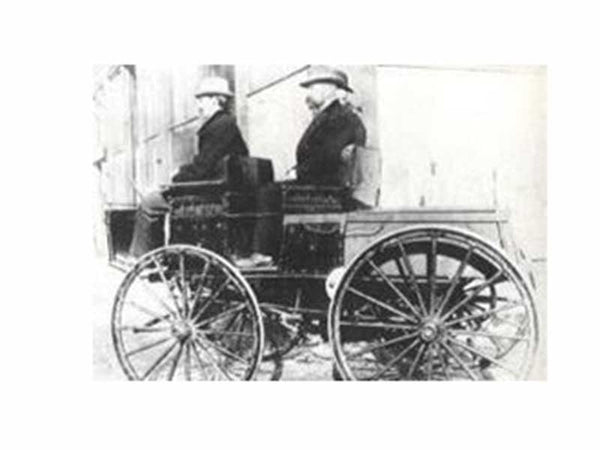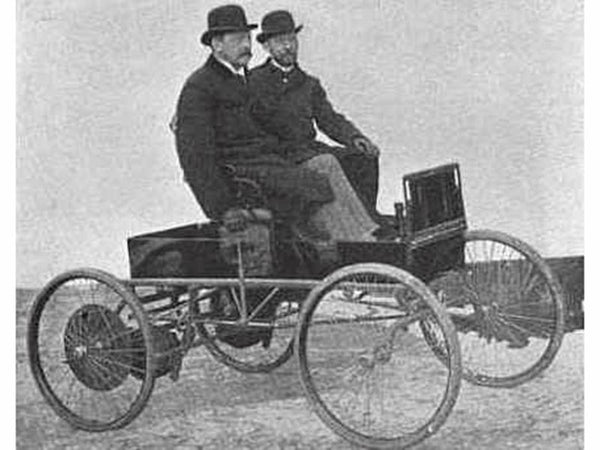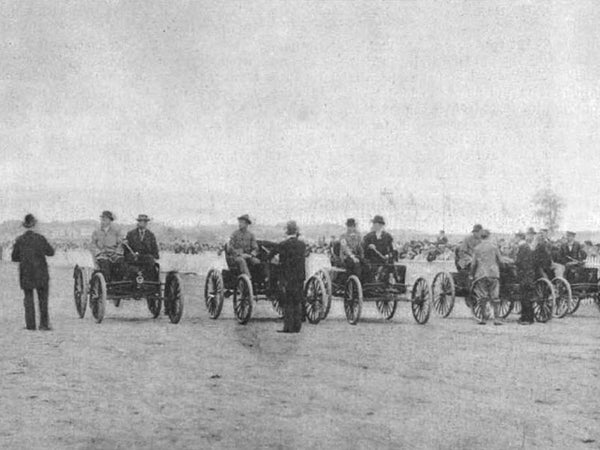main content:
When it comes to car racing, most people think of roaring motors, crowded arenas, well-designed tracks, champion drivers and overwhelming car advertisements. Auto racing not only makes companies with advanced technology and drivers with high driving skills famous, but also greatly promotes the economic development of the venues where the races are held. In fact, motor racing has been around for over a hundred years. At that time, the racing venues were simple and even temporarily rented racetracks, and the participating vehicles continued to break down during the driving process, and the audience watching the race was only those enthusiasts of motor vehicle technology. Nonetheless, these early car races provided valuable technical exchange opportunities that greatly advanced the development of automotive technology. At the same time, the media also made extensive reports on these car races, and made extensive publicity for cars in English-speaking countries, which also played a certain role in promoting the commercialization of cars in the future.
1. The first race with an electric car
On June 11, 1895, the first International Grand Prix was held in Paris, France. The race route was Paris-Bordeaux-Paris, with a total distance of 1135 kilometers. In this competition, for the first time, there are electric vehicles participating. In the end, the steam car won the championship, which lasted 48 hours and 47 minutes, including the time spent on refueling, repairing and other reasons, and the average speed was 23 kilometers per hour. Although Zantold and Broulter's electric cars failed to complete the race due to mileage issues, they only reached the Atlantic port city of Bordeaux. However, the participation of this electric car proved to the world the reliability of electric vehicles and is an important milestone in the history of electric vehicles. The media at the time covered the event, with The Horseless Age, the world's first automotive magazine, dedicated to the electric cars of Zantold and Broulter.

Zantold and Broulter's electric car
Zantold and Broulter only started building the cars three months before the race. Zhan Taode used to be a professional carriage maker and paid great attention to technical details. Before making this electric vehicle, he elaborated a differential and drivetrain. The electric vehicle's power source is made up of 21 batteries placed under the seat, operating at 42 volts and delivering 100 amps of current. The motor adopts series excitation winding, the speed can reach 1200 rpm, the output power is 1.8 kW, and the efficiency is 74%. The electric car has a driving range of 58 kilometers.
In order to make the electric car run the entire distance in the shortest possible time, Zhan Taode and Broulter set up a battery replacement station every 38 to 68 kilometers according to the road conditions. Compared to long charging times, each battery replacement takes an average of 10 minutes. This idea of adding a battery replacement station gave birth to the prototype of the automobile gas station in the future. In addition, it also provides an optional solution when the problem of the battery charging time is too long.
2. Chicago-Evanston-Chicago Motorcycle Grand Prix
On November 28, 1895, Morris and Salom's electric car competed in the Chicago-Evanston-Chicago Motor Vehicles Grand Prix organized by the Chicago Times. Two 1-horsepower electric motors are installed on the front axle of the electric vehicle, and the driving range can reach 40 kilometers at a speed of 32 kilometers per hour. However, because there were no battery swap stations like Jenn Todd and Broulter, the race was ultimately not completed. However, in this event, if speed alone is the deciding factor, Morris and Salom's electric cars will be well-deserved in the top spot.

Morris and Salom's electric car
From September 7 to 11, 1896, the Providence Motor Race was held in Narragansett, Rhode Island, USA, the world's first track race. 6 petrol cars and 2 electric cars participated in the competition. Morris and Salom regrouped and entered the race again. Their electric vehicle is a dual-motor system, rear-wheel steering, and uses battery voltage regulation technology to achieve four forward gears and one reverse gear, with a top speed of 32 kilometers per hour. The other electric car in the competition, from Rick Electric Vehicles, is also a dual-motor system, each rated at 3 horsepower, with a fully enclosed device to prevent dust from entering. The on-board power supply consists of 32 batteries, weighing 363 kg and having a capacity of 100 Ah. In the end, the Rick electric car won the championship with an average speed of 38.6 kilometers per hour. Compared to the previous Chicago race, the electric cars were significantly faster.
Taking a lesson from the Chicago race, owners of electric vehicles looked around for charging equipment ahead of time, but because the race organizers hadn't prepared it in advance, the only place they could find was a bullpen. Although it is far from the competition venue, the charging problem of electric vehicles is solved.
At the beginning of the first race, two electric cars rushed in front. Throughout the 5-mile race, the electric car showed its full strength, leaving the gasoline car far behind, with the two electric cars in first and second place.
In the second day of the race, Rick's electric car was still ahead of the pack and held the lead all the way to the second race victory. The electric cars of Morris and Salom were a little weaker in this race, finishing third.
The next two days, storms hit the field, and the game was interrupted. Still, there were plenty of people who came to see these new vehicles in the rain. On the last day, it was raining, and there were as many as 50,000 enthusiastic spectators around the arena. In the first two minutes of the game, two electric cars did their part and rushed in front. A petrol car followed and at one point overtook two electric cars, only to have a punctured tire and ended up in third place. In the end, Morris and Salom's EVs won the third race by 1 second, with Rick's EV coming in second. In this way, Rick Electric Vehicle Company won the final victory for its excellent performance in the first three games, and also received a $900 reward.

Providence Auto Race
Subsequently, electric vehicles showed their unique advantages to the world in car competitions all over the world, such as low noise, fast speed, no black smoke and no "smell". More and more people join the research and development of electric vehicles. Some people smell the business opportunities of electric vehicles and start electric vehicle manufacturing companies or electric vehicle operating companies. As a result, electric vehicles ushered in the first golden age.
















